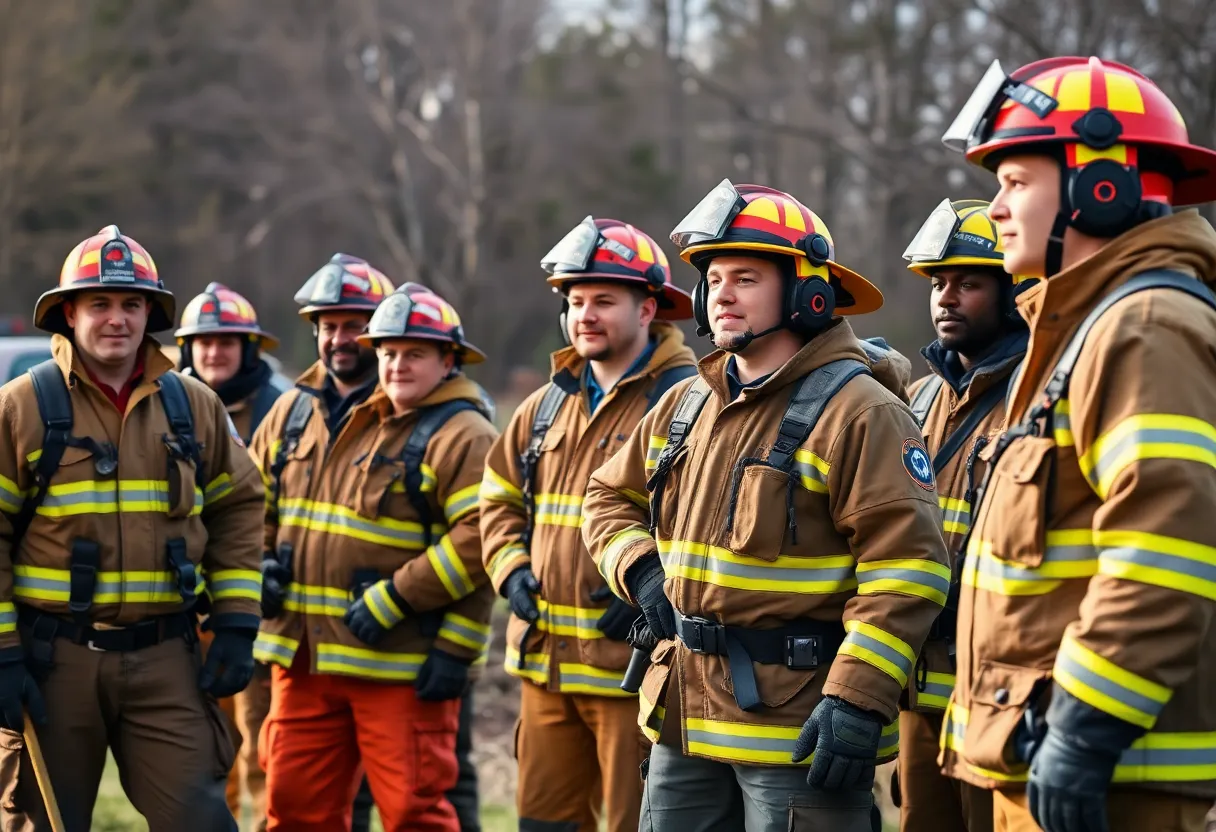News Summary
In an effort to combat the severe staffing crisis facing volunteer firefighters, Pennsylvania recently enacted legislation to streamline the certification process. Signed by Governor Josh Shapiro, the new law allows individuals with workplace fire suppression training to count that experience towards certification, reducing the total training hours required. While local officials acknowledge this law as a positive step, they emphasize the need for broader strategies to support volunteer firefighting and address ongoing manpower shortages in both fire and EMS services across the state.
Pennsylvania is taking legislative action to address a persistent staffing crisis affecting volunteer firefighters. Governor Josh Shapiro signed a new law in December aimed at simplifying the certification process for volunteer firefighter applicants, who have faced increasing training requirements that deter many potential recruits. The shrinking pool of volunteer firefighters has become a critical concern, as local officials and fire companies struggle to maintain adequate resources for public safety.
The new legislation permits individuals who receive fire suppression training through their workplaces to count that experience towards the certification needed to become a volunteer firefighter. This change reduces the total number of training hours required to approximately 206 hours, which many current volunteers must complete before responding to a fire. Historically, these escalating training demands have discouraged younger individuals from joining volunteer fire services, further exacerbating the staffing crisis.
Local fire chiefs, including Duane Hagelgans of Blue Rock Fire Rescue, view the development as a “step in the right direction.” Volunteer fire companies are prevalent in Lancaster County, and maintaining them is crucial, both for community safety and financial sustainability, as the costs associated with paid professional fire services can burden municipal budgets significantly. However, officials acknowledge that while the new law provides some relief, it is merely a temporary solution to a larger issue—they emphasize the need for a comprehensive strategy to support volunteer firefighting.
Concerns around the effectiveness of the new law have also been raised, particularly regarding its impact on rural departments. Some volunteers urge for additional incentives, such as tax breaks, to further encourage recruitment. It is noteworthy that certain municipalities in Lancaster County are already offering tax rebates to volunteer firefighters in an effort to boost local participation.
The issues facing volunteer firefighters are not isolated. Emergency medical services (EMS) are also grappling with manpower shortages, though the new legislation does not extend any incentives towards EMS volunteers. The law does temporarily grant EMS companies additional time for state grant applications, but does not alleviate the similarly high training burdens that EMS personnel must endure. For certification, EMS workers often require up to four continuous weeks of training, leading many EMS companies in Lancaster County to shift from volunteer models to paid staffing due to increased demand for services.
Local legislation is currently under consideration to provide second-class townships greater flexibility in generating revenue for fire and EMS companies, highlighting the ongoing discussions around public safety funding. A recent report from the Pennsylvania House of Representatives was particularly alarming, revealing a decline of roughly 260,000 volunteer firefighters across the state over the past four decades. Furthermore, a survey conducted among rural EMS agencies indicated that 44% are currently facing budget deficits, intensifying worries over the future viability of volunteer fire and EMS services amidst consistent staffing challenges.
As local emergency response personnel continue to voice concerns, it remains clear that the comprehensive approach to tackle the volunteer firefighter staffing crisis in Pennsylvania necessitates both the new legislative measures and the consideration of broader support mechanisms. Without these actions, the ability of local fire and EMS services to respond effectively to emergencies may remain at risk.
Deeper Dive: News & Info About This Topic
- Fox43: Firefighters Respond to Water Rescues in Lancaster County
- Wikipedia: Fire Department
- Lancaster Online: Emergency Crews Battle House Fire
- Google Search: Fire Services Pennsylvania
- WGAL: Crews Battle Lancaster County House Fire
- Google Scholar: Volunteer Firefighters Pennsylvania
- Encyclopedia Britannica: Firefighter
- WPXI: Crews Battle Fire in North Huntingdon Township

Author: STAFF HERE PHILADELPHIA WRITER
The PHILADELPHIA STAFF WRITER represents the experienced team at HEREPhiladelphia.com, your go-to source for actionable local news and information in Philadelphia, Philadelphia County, and beyond. Specializing in "news you can use," we cover essential topics like product reviews for personal and business needs, local business directories, politics, real estate trends, neighborhood insights, and state news affecting the area—with deep expertise drawn from years of dedicated reporting and strong community input, including local press releases and business updates. We deliver top reporting on high-value events such as Mummers Parade, Philadelphia Flower Show, and Thanksgiving Day Parade. Our coverage extends to key organizations like the Greater Philadelphia Chamber of Commerce and United Way of Greater Philadelphia, plus leading businesses in telecommunications, food services, and healthcare that power the local economy such as Comcast, Aramark, and Children's Hospital of Philadelphia. As part of the broader HERE network, we provide comprehensive, credible insights into Pennsylvania's dynamic landscape.





